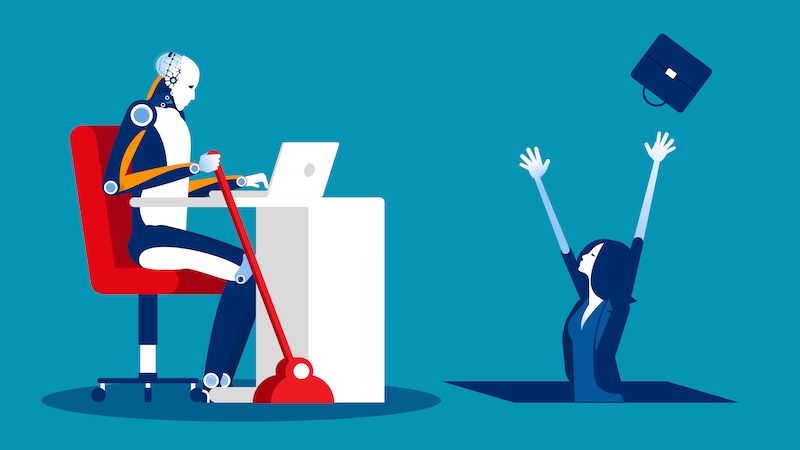the Android One smartphone failed, now what?
The reincarnation of the Android One program seemed like the way to update the average smartphone faster and longer. Google also committed to a nice portfolio of Android One devices. Three years later, the promising plan has largely failed.
Read on after the ad.
Contents
Why Android One Failed
Android One was announced in 2014 as a software program to release low-cost smartphones with stock Android and an excellent update policy in developing countries. A great plan that failed, after which Google pulled the plug.
In 2017, Google launched a revamped Android One program: stock Android with two years of version updates and three years of security updates for smartphones in all price ranges. Intended for all kinds of countries, including the Netherlands. Various manufacturers announced devices with varying prices and promised to update their models quickly and over time. In short: with one of the many Android One smartphones you were up-to-date for years.
Where are the Android One devices?
Three years after the promising reincarnation of the Android One program, few of these promises have come true. It is clear to me: the Android One smartphone has largely failed. This has two reasons: almost all manufacturers have stopped or never started with Android One devices and the update policy does not meet expectations.
Let me start with the smartphones. After the revival of Android One, Motorola, Xiaomi, HTC and General Mobile installed the software on their smartphones. Nokia put Android One on all its devices, with the exception of budget models with Android Go.
A good start, but today the range is much smaller. Motorola only offers the Moto G Pro and installs the regular Android software on all its other devices. Too bad, because Motorola’s update policy is sub-par.
Xiaomi has experienced a remarkable number of problems updating its Android One smartphones in recent years and was – according to anonymous sources – disappointed with the sales figures. The last Android One phone, the Mi A3, has never received a successor.
HTC released one Android One smartphone (the U11 Life), but it sold poorly and that is why the manufacturer focused on regular smartphones again. General Mobile released more and longer Android One models, but has since been discontinued in the Netherlands.
Then only Nokia remains. The manufacturer is persistent and sells Android One smartphones in all price segments. Anyone looking for an Android One model today will end up with Nokia and that is exactly what the company hopes. I understand that, but one serious provider is not what Google and consumers had in mind. So, Android One failed in this regard.
Update policy has failed
The mediocre update policy is the second reason the Android One program has failed. Google and manufacturers have promised fast updates for years. In practice, little of this has happened.
It took Xiaomi three years in a row – with the Mi A1, Mi A2 and Mi A3 – to roll out Android version updates. And when those updates came out, they turned out to be full of minor and major bugs that ruined the user experience. HTC, General Mobile and Motorola also weren’t that quick to update their Android One devices.

Nokia was the only one to do that much better, but lost its way a bit in 2020. Android 11 has been available since September, but has not yet appeared for any Nokia smartphone at the time of writing. The company is working behind the scenes on updates for its devices, but users will have to wait for weeks to months (depending on their smartphone model). The promise that you are always up-to-date with an Android One smartphone is therefore not being kept. Painful for Google and Nokia.
The slow update policy of Android One devices is extra painful when you know that a number of smartphones with the regular Android software have already been updated to Android 11. And that also takes a long time, I recently explained.
Among others, Oppo’s Find X2 series, the OnePlus 8 and 8 Pro and Xiaomi Redmi Note 9 series now run on Android 11. The Android 11 update for the Samsung Galaxy S20 is currently being tested and should be released soon.
Still interesting for whom?
It is clear to me: the Android One program has not become what Google, manufacturers and consumers expected from it. Three years after a promising start, only Nokia still sells Android One smartphones and they have to wait longer for Android updates than regular devices.
Android One has failed, but an Android One smartphone can still be an interesting choice. You are assured of two years of version updates and three years of regular security updates, and you get the stock Android software without unnecessary apps or changes from a manufacturer. Those are two advantages compared to many ‘normal’ Android smartphones, which receive less updates and / or run a heavy software shell.
Those who consider these matters important can certainly consider an Android One model. But if I can tip, in that case I would buy a Pixel 4a or Pixel 5. They run stock Android and are the first to receive long-term updates. So the idea of Android One, but well executed.


